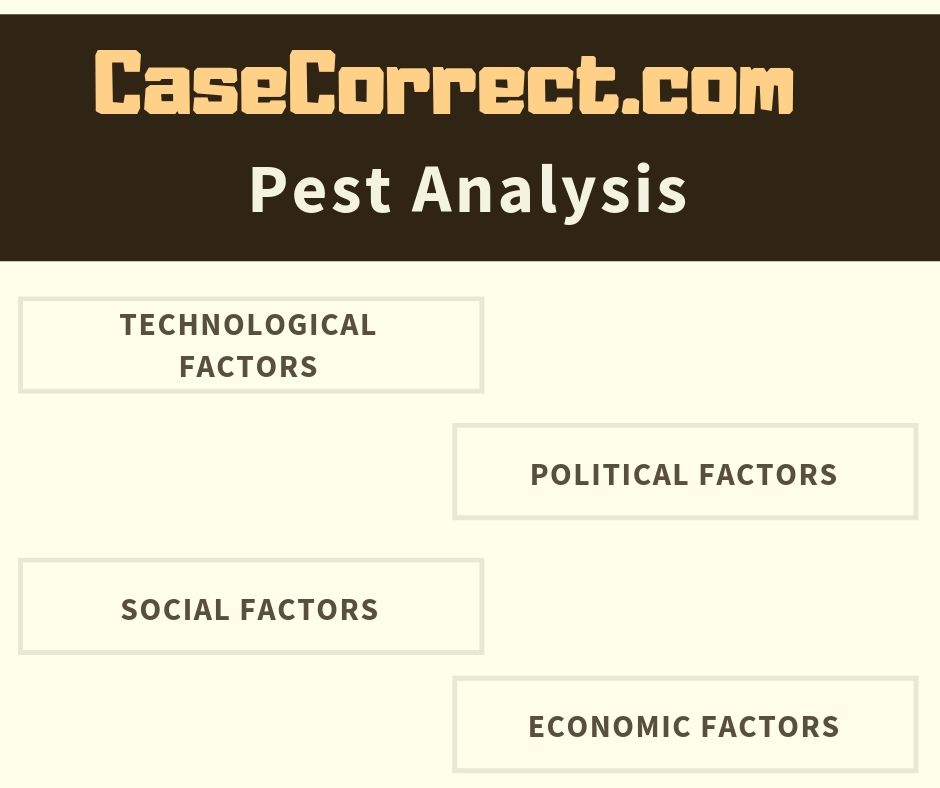The Indian Removal Act And The Trail Of Tears Case Solution
Introduction:
 In 1969, the facility of The Indian Removal Act And The Trail Of Tears Case Study Solution for providing its member physicians with the benefit of administrative and clinical structure. In the premises of United States of America, The Indian Removal Act And The Trail Of Tears Case Study Solution was among the most reputed organization. It was connected with Cape Cod Eye surgery and The Indian Removal Act And The Trail Of Tears offering numerous vertically incorporated services in order to fulfil the requirements of clients. The base operation of The Indian Removal Act And The Trail Of Tears Case Study Solution is localized in downtown Boston. About 160,000 clients were offered services each year with approximately 7500 surgeries and 4500 laser treatments.
In 1969, the facility of The Indian Removal Act And The Trail Of Tears Case Study Solution for providing its member physicians with the benefit of administrative and clinical structure. In the premises of United States of America, The Indian Removal Act And The Trail Of Tears Case Study Solution was among the most reputed organization. It was connected with Cape Cod Eye surgery and The Indian Removal Act And The Trail Of Tears offering numerous vertically incorporated services in order to fulfil the requirements of clients. The base operation of The Indian Removal Act And The Trail Of Tears Case Study Solution is localized in downtown Boston. About 160,000 clients were offered services each year with approximately 7500 surgeries and 4500 laser treatments.
Through the aggregation of a series of centralized functions, The Indian Removal Act And The Trail Of Tears Case Study Solution had actually substantially accomplished the economies of sales allowing the eye doctors to supply them with adequate time to focus on their patients and their individual lives. The business structure was its real strength that permitted individuals for directing and developing of practices in their suitable way. Given that 1990, the development of The Indian Removal Act And The Trail Of Tears Case Study Solution had been stable but the health care environment trends had actually understood to wear down the monetary returns of The Indian Removal Act And The Trail Of Tears Case Study Solution from 50 percent of the 1980's profits to 40 percent in 1990 and 30 percent in 2000.
Problem statement:
 Due to the modifications in the rules to operate in the The Indian Removal Act And The Trail Of Tears Case Study Analysis market, it was required by the companies to increase the volume of clients, reduction in costs of treatments and treatments in order to balance out minimized margins. Annual decline in the prices had created issue for medical professionals in earning an excellent income.
Due to the modifications in the rules to operate in the The Indian Removal Act And The Trail Of Tears Case Study Analysis market, it was required by the companies to increase the volume of clients, reduction in costs of treatments and treatments in order to balance out minimized margins. Annual decline in the prices had created issue for medical professionals in earning an excellent income.
Situational Analysis:
SWOT Analysis:
Strength:
• The Indian Removal Act And The Trail Of Tears Case Study Solution is understood to have a renowned position in the The Indian Removal Act And The Trail Of Tears Case Study Analysis industry of United States of America.
• Due to its existence in the United States, it has strong client base line as an approximate of160,000 visits of clients each year.
• Management of The Indian Removal Act And The Trail Of Tears Case Study Analysis including its doctors invest more time to activities in mentor, research study and development for creative product development.
• The employee had a collaborative relationship in going over and management of any specific operation headed by a group leader.
Weakness:
 • Problems in upkeep of scheduling system and central scheduling center of The Indian Removal Act And The Trail Of Tears Case Study Help pace due to the modification in the procedures followed by Shingleton's group.
• Problems in upkeep of scheduling system and central scheduling center of The Indian Removal Act And The Trail Of Tears Case Study Help pace due to the modification in the procedures followed by Shingleton's group.
• Financial returns of the company had been reducing annual with increase in the growth of The Indian Removal Act And The Trail Of Tears Case Study Analysis industry in United States of America by 5 percent.
• Increased volume of patients' visits needed usage of increased capacity that minimized the ability of the group the absorption of the circulation of modifications.
• Greater clients' volume led the team of serious stress threatening the mission of the practice and the rate of profits development.
Opportunities:
• Growth of the customer base line in the low-end market will supply them with direct contact with their customers to provide them with high quality services.
• Regional players tend to be key players in the growth of any leading organization, healthy relationship with relative local gamers can offer considerable result in the value chain of the business operation.
• As there has actually been reimbursement by the government, limiting brand-new entrants entry in the The Indian Removal Act And The Trail Of Tears Case Study Help market in the United States providing a benefit to all leading organizations in the The Indian Removal Act And The Trail Of Tears Case Study Solution market.
• Production of low-end items, as high-end products are costly and can not be cost effective for poor individuals receiving medication for their particular medical condition.
Threats:
• Improvement in making use of innovation against the protection of environmental concerns tend to grow the criticism by the groups of environmental protection.
• With pace to be the leading company in the world, efforts are being made by every company puzzling the consumers and growing issue about their health consciousness.
• Mismanagement of the scheduling procedure of the organization may result in loss of customers due to the poor services of the team and tension and whined doctors.
PEST Analysis:
Political:
 The notable element of the The Indian Removal Act And The Trail Of Tears Case Study Analysis market where The Indian Removal Act And The Trail Of Tears Case Study Solution operates has stability in terms of politics. At present, the rate of The Indian Removal Act And The Trail Of Tears Case Study Solution market had actually known to be increasing at about 34 million with the growing industry rate of about 5 percent. The Indian Removal Act And The Trail Of Tears Case Study Solution operating in the The Indian Removal Act And The Trail Of Tears Case Study Solution market in United States of America has actually been understood to experience political pressure mesmerizing for reduction in the costs of the items. This is due to the advances in innovation and medical sciences. Therefore, the impact of political element on The Indian Removal Act And The Trail Of Tears Case Study Solution is thought about as moderate.
The notable element of the The Indian Removal Act And The Trail Of Tears Case Study Analysis market where The Indian Removal Act And The Trail Of Tears Case Study Solution operates has stability in terms of politics. At present, the rate of The Indian Removal Act And The Trail Of Tears Case Study Solution market had actually known to be increasing at about 34 million with the growing industry rate of about 5 percent. The Indian Removal Act And The Trail Of Tears Case Study Solution operating in the The Indian Removal Act And The Trail Of Tears Case Study Solution market in United States of America has actually been understood to experience political pressure mesmerizing for reduction in the costs of the items. This is due to the advances in innovation and medical sciences. Therefore, the impact of political element on The Indian Removal Act And The Trail Of Tears Case Study Solution is thought about as moderate.
Economical:
Economic elements are the most influencing one in the market of health care. The Indian Removal Act And The Trail Of Tears Case Study Analysis requires adhering to consider laws of customers, laws of work and laws of health and wellness in the location where it functions. In addition, there is a requirement of adhering to included regulations developed in the target consumer market. In the United States of America, medication requires to be offered to the clients with regard to the requirements of FDA-- Fda. No matter, the advantage of laws and guidelines to well recognized company like The Indian Removal Act And The Trail Of Tears Case Study Help since they offer assistance in decreasing the entry of market and increasing the confidence of customer with drugs. Government has actually likewise implemented containment programs for restriction of repayment. The effect of financial factors is moderate.
Social:
Appropriate factors in social terms consist of modification in culture, aging patterns, health issues and demographics. Mainly in American and european states, majority of the population is aging increasing the demand of drug usage. This is expected to stay same or even increase with regard to time in forthcoming duration. The sets of insurance availability and healthcare programs presented provides support in drug purchasing. With increase in the check outs of the patients in The Indian Removal Act And The Trail Of Tears Case Study Help has also worked as a factor in increasing the need of drugs. Therefore, the effect of social factors are thought about favourable.
Technological:
Improvements through making use of biotechnological techniques and strategies has actually assisted in constant development for research study and advancement with contribution of the organization's own physician investing their time in the technological enhanced devices in the The Indian Removal Act And The Trail Of Tears Case Study Analysis market. The research study and advancement requires heavy investment, but it significantly assists in the quality of drugs during its development. Development in technological usage like social networks supplying with opportunity to market themselves directly to low-end market. Regarding to, the impact of technological elements is moderate.
Alternatives:
Incorporation of managerial and HR expertise:
 Due to the mismanagement and increased volume of clients check outs affecting the performance of doctors and to handle the factor behind their tension. HR practices in the management of operations of the company play an essential role.
Due to the mismanagement and increased volume of clients check outs affecting the performance of doctors and to handle the factor behind their tension. HR practices in the management of operations of the company play an essential role.
Pros:
• They have the charge of recruitment offering training of leadership, management of group work, support in scheduling, and a systematic procedure of working with.
• They work in lead in the advancement management, management of performance, succession preparation, paths of profession and some other elements in the management of skill.
• In advancement of effective relationships at work for performance and contribution, they provide help by knowing the essential gamers.
Educated in terms of policies, guidelines and policies including payment that depends on the city, area or state.
Cons:
• Governmental bodies are mainly worried for financing with the macro-economic issues rather micro-level concentrating on the contemporary practices of HR concentrating on the performance and motivation of workforce.
• Development of ability of HR requires financial investment in development and training of both HR experts line professional with the responsibilities of staff management.
Financial investment in enhancing the capability of professional personnel evaluates in a variety of methods order to deliver the function of HR management. Even, after the rejection of outsourcing, the in-house function of needs to be kept track of and audited effectively.
Reduction in direct personnel cost:
The method is to be focused within the organization which is primarily due not since of the need however out of sheer requirement which may carry out decrease in expense. Reduction in cost is basically for enhancement of efficiency and the portion of profit development.
Pros:
• Expense decrease standard is known to increase the margins of profit which the sought-after advantage. The organization can perform expense reduction process according to their need to increase the revenue margin.
• Boost in the performance through decrease in expense by worrying employees about its entryway in the phase of micro-management.
Improvement while doing so requirements since the effects of improvising processes is on the existing process nature enhancing the standards of product formation.
Cons:
• Although, the process of cost reduction is a positive one in the development and growth of the company as a long-term strategy, however false cutting of the cost may create a panic alarm throughout the organization.
• Changing in the processes followed can often be hazardous rather improving rate of earnings development depending on the participation of external and internal stakeholders.
• Focusing on the reduction of expense may result in jeopardize on the quality of product impacting the objective and vision of the organization and threatening the worth of the brand name.
Development of a new organizational structure:
Change in the structure of the company is to manage the changes in organization operations and run it from a status quo to the desired state in the future. It aims to bring tactical modifications in the organization for a client company to ensure that the corporation runs usually throughout the modification.
Pros:
 • Organizations that considers external specialist for execution in changing the structure of the company has the advantage of external influence.
• Organizations that considers external specialist for execution in changing the structure of the company has the advantage of external influence.
• Modification in the structure of organization forces the management of organization to keep track of the modification execution to guarantee that the processes required remain in location and estimate that there are no barriers hindering successful execution of the modification. The most efficient modification in the structure of company forces will gather the intelligence of organization in order to better comprehend the method the company operates.
Changes in the structure of organization manage the modification speed and the manner it changes to be carried out. It help the company in embracing changes successfully. It also ensures that the adjustment of the modification in the structure of organization is going on its ideal speed and the adjustment of process must be proceeded.
Cons:
• Change in the structure of company is not performed directly in a typical manner through leader serving as the top primary members of the organizational management. It can be somehow difficult for bringing modification in the structure of the organizational force in order to get organization broad buy-in.
• While the team responsible for altering the structure of the organization helps the company to change with the carried out changes, modifications in the organizational structure hardly ever has the capability of empowerment and to supply ownership of the modifications to the workers in the organization.
• Modifications in the structure of company, is to re-organize the whole structure of the company on how it operates. However, it provides with certainty to run the organization in a smooth manner however it need to not be executed during seriousness.
